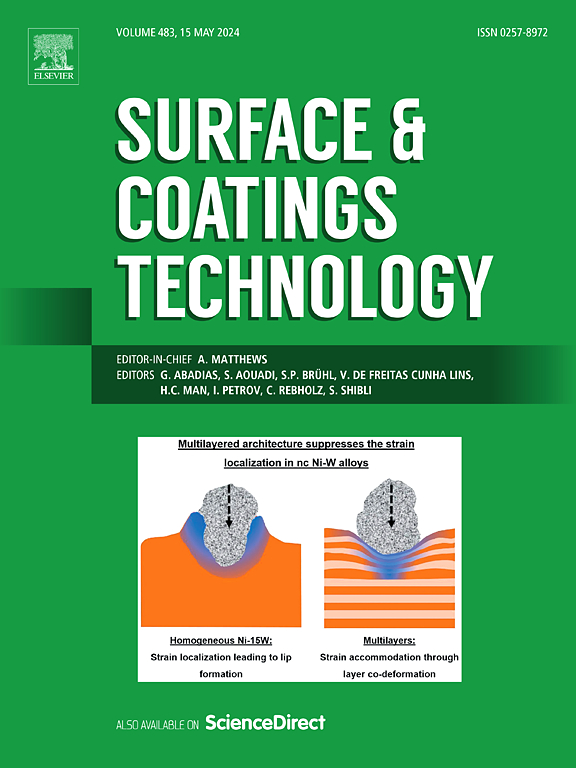Dry sliding friction and wear behavior of HVOF sprayed FeCrMnCoNi high entropy coatings (HECs) at room and elevated temperatures
IF 5.3
2区 材料科学
Q1 MATERIALS SCIENCE, COATINGS & FILMS
引用次数: 0
Abstract
Despite their extensive use in the aerospace industry Ni-, Ti- and Co-based alloys have shown some limitations when used in tribological interfaces under extreme environments, particularly in next-generation aero-engines where high temperatures are prevalent. To address these challenges, there is a growing demand for the development of wear-resistant coatings capable of operating efficiently under such harsh environments. High entropy alloys (HEAs) have emerged as potential candidates for high temperature tribological applications due to their superior combination of mechanical and thermal properties. However, their wear behavior over a wide range of temperatures has not been extensively studied. In this study, FeCrMnCoNi high entropy coatings (HECs) were developed using the high-velocity oxygen fuel (HVOF) process under three different spraying conditions: oxygen-rich (OR), fuel-rich (FR), and fuel-rich with high feed rate (H-FR). The tribological behavior of these HECs was evaluated under dry sliding conditions at room temperature (100 m sliding) and 350 °C (12 m and 100 m sliding) against alumina counterballs. The OR coatings demonstrated significantly improved wear performance at both temperatures compared to FR and H-FR coatings. A detailed characterization of the wear tracks using high-resolution electron microscopy and surface profilometry revealed that the enhanced wear performance of OR coatings at elevated temperatures could be attributed to their relative higher hardness, the formation of a smooth and compact tribofilm in the contact region, and subsurface strengthening through grain refinement. This research provides valuable insights into the wear mechanisms of HEA-based coatings, offering a pathway to develop more effective high-temperature tribological solutions for aerospace and other industrial applications.
求助全文
约1分钟内获得全文
求助全文
来源期刊

Surface & Coatings Technology
工程技术-材料科学:膜
CiteScore
10.00
自引率
11.10%
发文量
921
审稿时长
19 days
期刊介绍:
Surface and Coatings Technology is an international archival journal publishing scientific papers on significant developments in surface and interface engineering to modify and improve the surface properties of materials for protection in demanding contact conditions or aggressive environments, or for enhanced functional performance. Contributions range from original scientific articles concerned with fundamental and applied aspects of research or direct applications of metallic, inorganic, organic and composite coatings, to invited reviews of current technology in specific areas. Papers submitted to this journal are expected to be in line with the following aspects in processes, and properties/performance:
A. Processes: Physical and chemical vapour deposition techniques, thermal and plasma spraying, surface modification by directed energy techniques such as ion, electron and laser beams, thermo-chemical treatment, wet chemical and electrochemical processes such as plating, sol-gel coating, anodization, plasma electrolytic oxidation, etc., but excluding painting.
B. Properties/performance: friction performance, wear resistance (e.g., abrasion, erosion, fretting, etc), corrosion and oxidation resistance, thermal protection, diffusion resistance, hydrophilicity/hydrophobicity, and properties relevant to smart materials behaviour and enhanced multifunctional performance for environmental, energy and medical applications, but excluding device aspects.
 求助内容:
求助内容: 应助结果提醒方式:
应助结果提醒方式:


